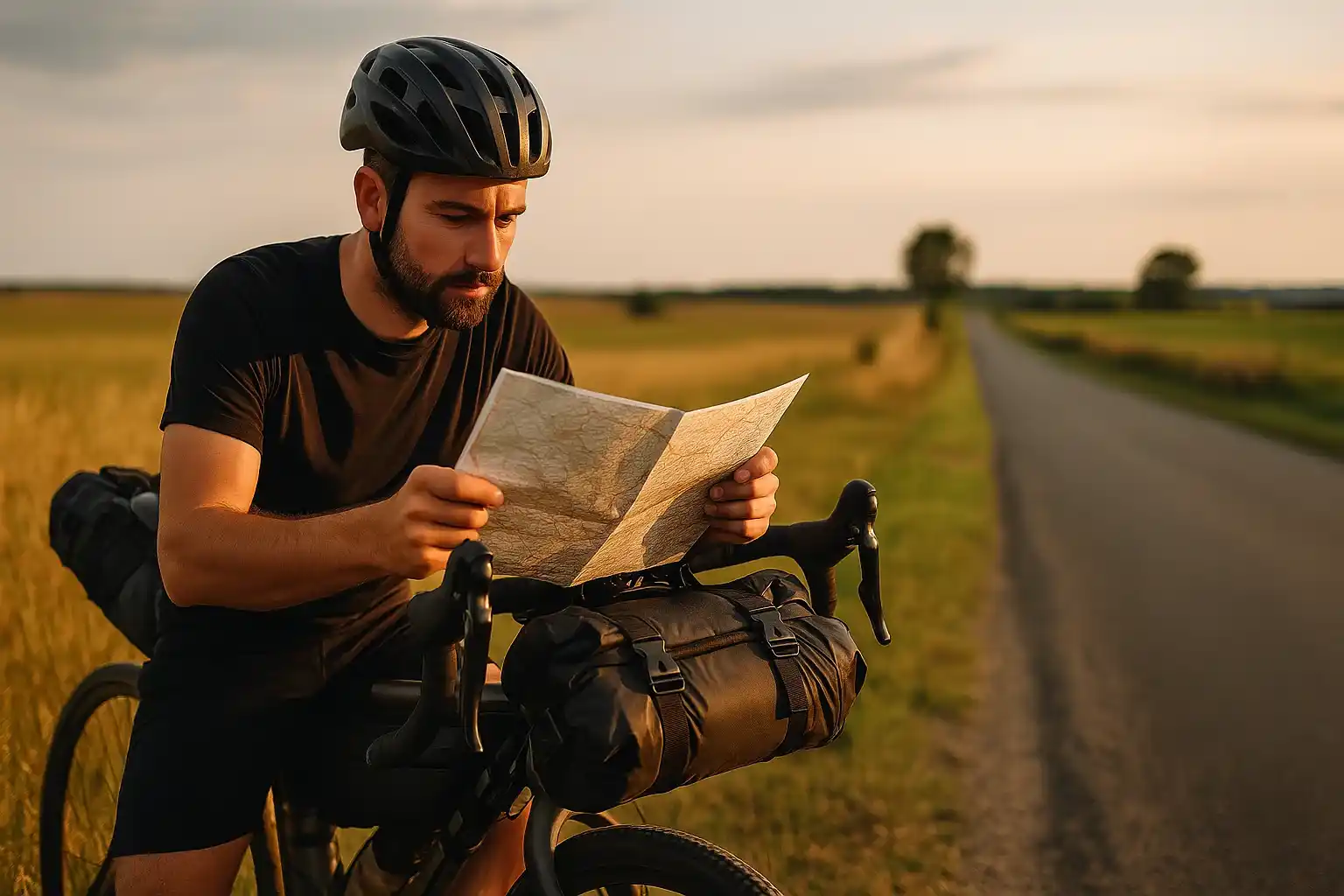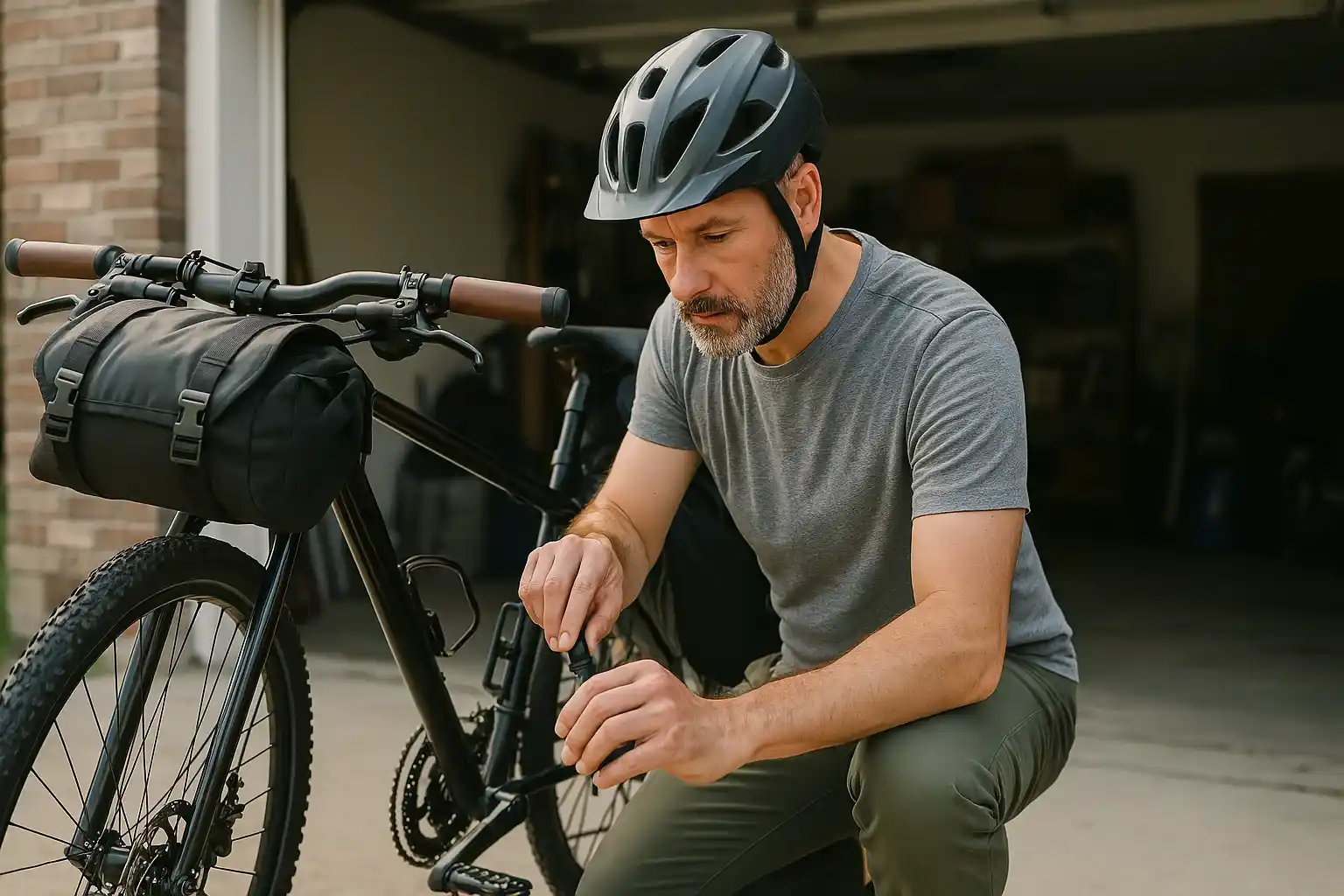The first 100 kilometers on a bicycle is not a sporting feat, but a practical task that you can prepare for step by step. The main thing is not to underestimate the organization. Route, food, clothing, weather, navigation, communication – everything matters. Especially if you’re not traveling alone or planning a trip out of town.
By the way, to keep friends or loved ones from worrying, prepare ahead of time, gather everything you need, share details with them, and set up how you will stay in touch. For example, they and you can mutually track phone numbers or use specialized apps like Number Tracker: this way you’ll always be in touch and can even find each other while you’re on the road together.
So today we would like to discuss in detail how to prepare for your first 100 kilometer bike expedition. Let us discuss everything from bike and route selection to tips on endurance, safety and gear. Keep it simple and detailed so that the road is a pleasure, not an ordeal.

Your Roadmap: Essential Actions to Prepare and Conquer
Cycling 100 km is not about heroism, but always about planning. You need to do all these things: pick the right route, pack your things, think of your safety and check your tires. We know that almost every time is a daunting task, but we can turn it into a doable adventure. Below the one can find some steps that will walk you through the process and help you ride with confidence, not guesswork.
Step 1: Define Your Route and Purpose
Before you pack snacks or pump tires, define “why” and “where” you are going. Your answers shape both the route and also your mindset. Thus, you can turn a 100 km ride into a quiet solo reset, a personal challenge, or even a casual exploration with friends. But whatever the purpose, your route should serve it, not sabotage it.
So we start by choosing the type of terrain: smooth asphalt for speed and predictability, gravel for a wilder mood, or a mixed route for variety. Each has different physical demands, so for novice cyclists, a route with fewer gradients and wider paths will suit them better and make the ride more enjoyable and build confidence.
To properly plan a ride, use route planning apps that offer far more than directions. In the table below you can find a quick comparison:
| App | Key features | Best for |
| Komoot | Offline maps, elevation data, surface types | Touring and gravel bike planning |
| Strava | Community-shared routes, fitness tracking | Social cyclists, performance insights |
| Google Maps | Street view, terrain option, estimated time | Basic navigation and accessibility |
For the first 100km, try to avoid circuitous routes – they leave fewer opportunities to exit if things go wrong. Instead, choose a linear route from A to B with “escape points” – towns, train stations or crossroads. This will provide flexibility and peace of mind if the weather changes or your energy runs out.
To keep your spirits up, break the route into easily digestible sections – 25-kilometer blocks: warm-up, steady rhythm, overcoming fatigue and the final stretch. It’s a great idea to schedule a different activity or at each section of the route, such as a snack, a photo stop, or simply stretching, as these mini goals serve as mental refueling.
Interesting fact: A study by the European Cycling Federation found that planning routes with checkpoints reduces dropout rates in long-distance recreational rides by more than 30%. Thus, remember that your small mental victories keep your legs moving.
Step 2: Prepare Your Bike
Please remember the most important rule for cyclists: even the best cyclist will not get far on a poorly maintained bike. So bring your bike to a service center a few days before your trip (ideally 10-14) – or inspect it yourself if you are confident in your abilities. Check the brakes, shifting, tire tread and chain lube, as even one small mechanical issue can turn an adventure into a very long walk home.
Next, purchase a basic repair kit for the trip: you should carry a multi-tool with allen wrenches, a spare inner tube, tire levers, and a mini pump at a minimum. If you have tubeless tires, bring sealant and a tire plugging kit. Also check that your saddle height and handlebar angle are optimal for comfort. Note that too high or low an angle can cause back pain or numb fingers after only 50km.
Tip for beginners: Before the big day, simulate it. For example, try riding 40-50 km with all your gear to get a feel for how the bike behaves under load. It’s a great chance to identify discomfort, test the packing system and be calm and confident that everything will go well. Think of it as a dress rehearsal – no pressure, just understanding.

Step 3: Train Your Body and Mind
Preparing for a 100km ride is a communication between your legs and your brain, and for many beginners it is the brain that gives up first. The key is to believe in yourself long before you step on the pedals on the big day.
So starting at least three weeks in advance with two to three rides a week of 20-30 km will be more than enough if you are consistent. Include at least one ride with gentle hills – not to torture yourself, but for confidence. Due to this route, you will begin to understand how your body responds to exertion and how to keep your pace.
By the way, practice small snacks during each run – eat a banana or a small snack every 45-60 minutes and drink water regularly, you should drink all the time, not just when you are thirsty. This habit will teach your metabolism to get ahead of fatigue instead of chasing it.
Lifehack: Visualize the ride during your rest days: imagine the road, the breathing, your triumph at the end. Studies show that mental rehearsal greatly improves performance and endurance.
Step 4: Pack Smart
When packing for a day expedition, you must strike a balance between preparedness and lightness. Your backpack (or saddlebag) should be your mobile toolkit – useful, organized, and never overloaded.
Let’s be honest: a heavy load is one of the easiest ways to turn a great trip into hard labor. That’s why the total weight of your gear should ideally not exceed 7-9 kilograms. But it’s not just about weight – it’s about what and how you fold and take it on the road.
Here’s what to include in your kit:
- Weather protection: a lightweight rain jacket and thermal underwear – even on summer mornings it can be chilly.
- Energy and hydration: 2-3 energy bars, nuts, dried fruit, electrolytes and at least 1.5 liters of water.
- Navigation and power: phone, paper map as backup, powerbank.
- Safety: mini first aid kit, emergency whistle and ID card.
Packing tip: Use ziplock bags or colored dry bags to organize things – like “snacks,” “tools,” “clothing,” and “emergencies.” This will save time and keep everything dry. And also a few days before your trip, do some test packing and take a mini-trip with your cargo. That way you will know what shifts, rattles, or needs to be revised.
Step 5: Stay Safe and Connected
Now you are trained, packed, and planned. But don’t forget the most important thing: to ride with peace of mind. Whether you go solo or with a group, communication is your invisible helmet. Thus, before you gi, fully charge your phone, download offline maps (as you can’t always count on reception in rural areas) and share your planned route with someone you trust.
And that’s where smart technology that isn’t intrusive comes to the rescue. For example, the Number Tracker app lets your loved ones track your location on the road (as well as you theirs) if you share it. The app is not intrusive and has a lot of useful features: built-in AI assistant for daily or road tasks, location history, shared interactive map, so it serves as a gentle reassurance that you’re safe – and it’s especially useful for solo cyclists or those taking new routes.
Pro tip: Set safety checkpoints on a schedule too- for example, ping a friend every 2 hours or mark safe points along the route where you will confirm you are okay. And remember: safety is not about being paranoid, but also about providing yourself and those who care about you with enough peace of mind to enjoy the ride.
Step Back to Yourself
Sometimes you just have to go far away to get back to yourself. And your first 100km bike expedition can also be about a new sense of distance, rhythm and freedom. You don’t have to ride fast, with a flag, or with a finishing ribbon. The main thing is to ride with an understanding of why and how. And maybe that is the real goal – not just to get there, but to feel the way.
